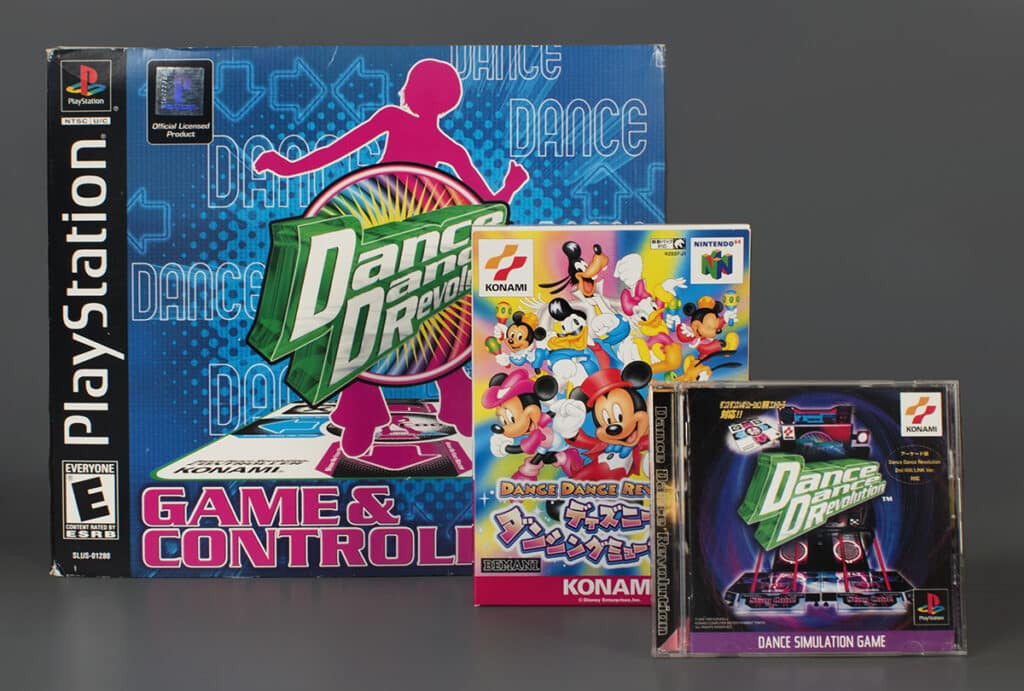Music has resonated with humanity since the dawn of time, making musical games universally appealing across ages, genders, and cultures. From childhood games like “Musical Chairs” to adult pastimes such as karaoke, the allure of musical interaction is undeniable. This fascination naturally extended into the electronic gaming world, where rhythm games have carved out a significant and enduring niche. While early rhythm games adopted simple call-and-response mechanics, it was the advent of Arcade Dance Revolution games, spearheaded by Dance Dance Revolution, that truly ignited a global phenomenon, merging physical activity with digital entertainment and forever changing the landscape of music gaming.
The roots of rhythm games in the electronic market can be traced back to the 1970s, with many initial titles mirroring the “call-and-response” style popularized by Ralph Baer’s Simon in 1978. A notable precursor to modern dance games emerged in 1987 when Human Entertainment released Dance Aerobics for the Nintendo Entertainment System. This innovative game utilized the Nintendo Power Pad as a rudimentary dance floor, prompting players to mimic on-screen dance steps, sometimes incorporating hand movements in more challenging modes. However, it was Sony’s PaRappa the Rapper in 1996 that truly set the stage for the rhythm game craze we know today. PaRappa the Rapper introduced crucial elements like precise button presses synchronized with music and accuracy-based rankings, establishing the fundamental mechanics that would define future rhythm games.
Konami, a major player in the arcade industry, entered the rhythm game arena in 1997 with Beatmania. This game immersed players in the role of a club DJ, challenging them to spin virtual records in time with on-screen cues. While Beatmania garnered considerable popularity and spawned numerous sequels and spin-offs, it was Konami’s second foray into music games, Dance Dance Revolution (DDR), that catapulted the genre into mainstream consciousness. Launched in 1998, arcade Dance Dance Revolution quickly transcended geographical boundaries to become a global sensation and arguably the most iconic rhythm game ever created.
 People playing Dance Dance Revolution at an arcade
People playing Dance Dance Revolution at an arcade
Dance Dance Revolution, initially released in Japanese arcades in September 1998 and known as Dancing Stage in European markets, demanded a unique blend of physical and mental skills. Players had to synchronize balance, dexterity, strength, and rhythm to achieve high scores. The gameplay revolved around following on-screen arrows that corresponded to pressure-sensitive footpads on the arcade machine. As arrows scrolled upwards, players had to step on the matching footpad in time with the music’s beat. The game meticulously judged each step for timing and precision, awarding ratings of “Perfect, Great, Good, Boo, or Miss.” Final scores ranged from the coveted “SS” rank, signifying all perfect steps, to an “E,” indicating failure. Accumulating too many “Boo” or “Miss” ratings would deplete the Dance Gauge, abruptly ending the song and the player’s run. To cater to a wide range of skill levels, Dance Dance Revolution allowed players to adjust the difficulty of each song, from beginner-friendly “Easy” to incredibly challenging “Maniac” modes.
Beyond casual enjoyment, Dance Dance Revolution fostered dedicated subcultures within its player base. Two prominent styles emerged: “technical” and “freestyle” play. Technical players, often referred to as “Perfect Attack” players, strived for flawless accuracy, aiming for 100% “Perfect” steps even on the highest difficulty settings. They prioritized minimal movement, often leaning on the arcade cabinet’s railing to solely focus on their footwork and maximize precision. In contrast, freestyle players prioritized visual spectacle and creative expression. They typically selected lower difficulty levels to allow for elaborate, full-body dance routines. These routines were often embellished with spins, leaps, and improvisational movements, transforming the game into a performance art.
Dance Dance Revolution’s instant success in arcades stemmed from its simple yet addictive gameplay and its selection of catchy, energetic music. Recognizing its broad appeal, Konami quickly ported the game to the Sony PlayStation in 1999, bringing the arcade dance revolution experience into homes worldwide. Konami continued to release subsequent “Mixes,” each featuring new and unique song lists. This strategy encouraged players to collect multiple versions to access their favorite tracks, further fueling the game’s popularity. The appeal of Japanese pop music (J-pop) within DDR mixes even led a significant portion of the international fanbase to seek out and even pirate Japanese versions of the game to access this distinct musical style.
Today, Dance Dance Revolution transcends its origins as a mere video game; it has become a cultural phenomenon. Many players embrace DDR as a fun and effective form of aerobic exercise. As early as 2007, The New York Times reported that over 1,500 high schools in the United States were planning to incorporate DDR into their physical education programs, recognizing its potential to engage students in fitness activities. In 2004, Norway officially recognized DDR as a sport, with sanctioned tournaments organized nationwide. Konami has further championed the game’s competitive aspect by promoting it as an e-Sport, hosting annual competitions in Tokyo, Japan, attracting top players from around the globe. By 2018, Konami had released over 100 Dance Dance Revolution games, including spin-offs featuring popular franchises like Disney, Hello Kitty, Mario Bros., and Winnie the Pooh, demonstrating the brand’s enduring marketability. A television show bearing the same name aired from 2006 to 2007, further promoting dance and fitness to a younger audience. Dance Dance Revolution remains one of Konami’s most successful video game franchises and a fixture in arcades worldwide. Crucially, DDR’s groundbreaking success paved the way for the explosion of music game popularity in the mid-2000s, setting the stage for franchises like Guitar Hero and Rock Band. As its name suggests, Dance Dance Revolution truly revolutionized the music gaming landscape, leaving an indelible mark on popular culture and solidifying the arcade dance revolution as a vibrant and influential genre.
Did You Know?
In 2011, Alexander Skularek set a Guinness World Record for the longest Dance Dance Revolution marathon, playing for an astounding 16 hours, 18 minutes, and 9 seconds. This feat highlights the game’s captivating nature and the dedication of its players.
Related Content
Engaging with Games: More Than Just Play
The Educational Power of Video Games

